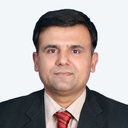Antifungal activity of Andrographis paniculata extracts and active principles against skin pathogenic fungal strains in vitro.
Parole chiave
Astratto
BACKGROUND
Andrographis paniculata Nees. (Acanthaceae) is an annual herbaceous plant widely cultivated in southern Asia, China, and Europe. It is used in the treatment of skin infections in India, China, and Malaysia by folk medicine practitioners.
OBJECTIVE
Antifungal activity of the whole plant extracts and isolation of active principles from A. paniculata were investigated.
METHODS
Dichloromethane (DCM) and methanol (MEOH) extracts of A. paniculata whole plant were screened for their antifungal potential using broth microdilution method in vitro against seven pathogenic fungal species responsible for skin infections. Active principles were detected through bioguided assays and isolated using chromatography techniques. Structures of compounds were elucidated through spectroscopy techniques and comparisons were made with previously reported data for similar compounds.
RESULTS
DCM extract revealed lowest minimum inhibitory concentration (MIC) value (100 μg/mL) against Microsporum canis, Candida albicans, and Candida tropicalis, whereas MEOH extract revealed lowest MIC (150 µg/mL) against C. tropicalis and Aspergillus niger. DCM extract showed lowest minimum fungicidal concentration (MFC) value (250 µg/mL) against M. canis, C. albicans, C. tropicalis and A. niger, whereas MEOH extract showed lowest MFC (250 µg/mL) against Trichophyton mentagrophytes, Trichophyton rubrum, M. canis, C. albicans, C. tropicalis and A. niger. Bioassay guided isolation from DCM and MEOH extract afforded 3-O-β-d-glucosyl-14-deoxyandrographiside, 14-deoxyandrographolide, and 14-deoxy-11,12-didehydroandrographolide as antifungal compounds. The lowest MIC (50 µg/mL) and MFC (50 µg/mL) was exerted by 14-deoxyandrographolide on M. canis.
CONCLUSIONS
This is first report on the isolation of antifungal substances through bioassay-guided assay from A. paniculata. Our finding justifies the use of A. paniculata in folk medicines for the treatment of fungal skin infections.


